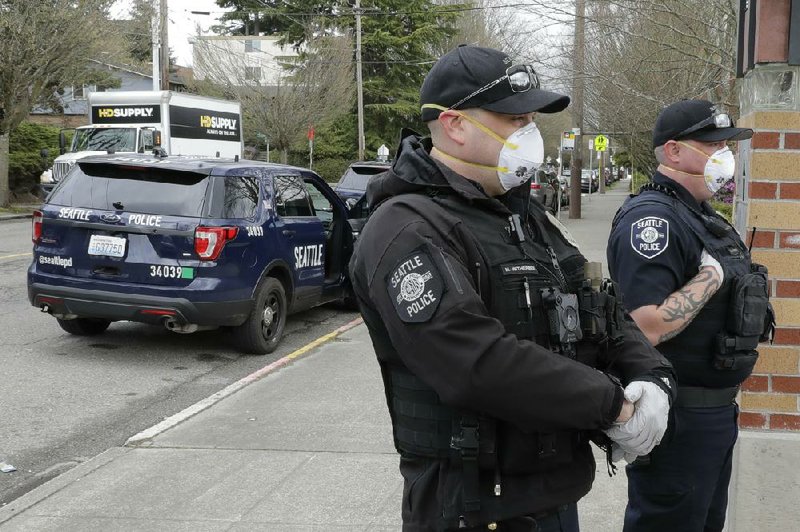People called them "flu fences" and "chin sails." Gala attendees fastened theirs with gaudy earrings. Smokers cut flaps in them, and movie houses gave them away with tickets.
During the influenza pandemic of 1918, officials often advised Americans to wear face masks in public. Doctors believed that masks could help prevent "spray infections," according to historian John Barry in his book, The Great Influenza: The Story of the Deadliest Pandemic in History.
Enforced by local health officials, the facial coverings grew routine. Often, Red Cross chapters fashioned and distributed the masks that were "seen everywhere and would become a symbol of the epidemic," Barry wrote. Americans used the masks as a method of retaining some normalcy and as the only aspect of the epidemic discussable with any sense of play.
If directed to wear a mask, homemade worked. "Take a piece of gauze the size of a sheet of typewriter paper," said instructions in The Atlanta Constitution. "Fold it twice, so that it will fit an envelope. Then attach strings to the four corners and tie these strings at the back of the neck. The mask covers the nose and mouth, so that the wearer breathes through four thicknesses of gauze. A clean handkerchief is just as good as the gauze."
1262028
Now, amid the novel coronavirus pandemic, the Centers for Disease Control and Prevention is debating whether it should recommend that people wear masks when they go outside. In 1918, with a different virus, it didn't help.
Iowa's Board of Health reminded those sewing masks to add some "colored worsted [a type of yarn] or tape" on the part of the mask that would be on the outside. The upper margin was to be drawn tightly over the bridge of the nose, right under the eyes. Masks were to be washed after each use, not touched once they were tied on, and boiled for five minutes before wearing again.
The masks disrupted lives in unexpected ways. A San Francisco fisherman said "bandits" in flu masks robbed him. A woman taking a train from Chicago to Pasadena, Calif., reportedly experienced a break from sanity when she disembarked and "beheld the masked city," according to a story in the Los Angeles Times. And columnist Fay King bemoaned the new mustaches. Men who formerly "couldn't bear to have [a] hairy lip classed with a tooth brush" were growing facial hair, now hidden behind the masks.
On Nov. 1, 1918, Eugene C. Caley became the first man in Oakland, Calif., to be arrested for not wearing a mask. He was released on bail, although similar scofflaws in San Francisco had been sentenced to up to 10 days in jail. Departments donated revenue from fines to the Red Cross.
"This is only the beginning," said the chief of police, according to the Oakland Tribune. "We are going to enforce this mask ordinance if we have to pack the city jail with people. This epidemic is too serious to be taken as a joke, and men arrested ... will find that it's no laughing matter when they face the police judges."
A Section on 04/03/2020
